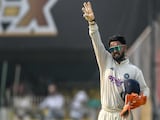- The black box of Air India’s Boeing 787-8 Dreamliner is damaged and may be sent to the US for data extraction
- The black box consists of two devices: the Cockpit Voice Recorder (CVR) and the Flight Data Recorder (FDR)
- Air India Flight AI171 crashed after takeoff from Ahmedabad, killing 241 of 242 people on board
The 'black box' of Air India's Boeing 787-8 Dreamliner plane that crashed on June 12 in Ahmedabad has sustained damage and may have to be sent to the United States to continue the data extraction process, sources have said, adding that the government will take the final call.
The 'black box' is in fact two devices in itself - the Cockpit Voice Recorder, or CVR, and the Flight Data Recorder, or FDR. The 'black box' recovered from the crashed Air India flight could be sent to the National Transportation Safety Board in Washington DC for inspection. According to sources, in the event that the 'black box' is sent to the US, a contingent of Indian officials will accompany the black box to ensure all protocols have been followed.
On April 9, Aviation Minister Ram Mohan Naidu inaugurated a cutting-edge Digital Flight Data Recorder and Cockpit Voice Recorder (DFDR & CVR) Laboratory at the Aircraft Accident Investigation Bureau (AAIB) at Udaan Bhawan in New Delhi. The state-of-the-art facility, dubbed as the "Black Box Lab", was established after an investment of Rs 9 crore.
The Air India Flight AI171 crashed moments after takeoff from Ahmedabad's Sardar Vallabhbhai Patel International Airport en route to London's Gatwick Airport. The aircraft plunged into a medical college hostel complex in the Meghani Nagar area at 1:40 pm, sparking a massive blaze. Out of 242 on board, only one survived.
The 'black box' from the doomed Air India flight was recovered Monday, 28 hours after the crash. The 'black boxes' are actually bright orange in colour to help locate them from debris and wreckage.
The Cockpit Voice Recorder (CVR) captures up to 25 hours of cockpit conversations, noise, radio calls with air traffic control, and audible alerts in newer aircraft models. However, AI-171 was operating a Boeing 787 delivered in 2014, prior to the 2021 mandate for 25-hour CVR storage. Therefore, the recorder likely had a two-hour recording capacity.
The Flight Data Recorder (FDR), on the other hand, collects parameters such as altitude, airspeed, heading, vertical acceleration, and control surface movements, among others. In modern jets like the 787-8, FDRs can record thousands of parameters simultaneously and loop for over 25 hours.
A Timeline
According to the Aviation Ministry, the aircraft took off at 1:39 PM local time on June 12. It reached a height of less than 600 feet before its climb stalled.
Thirty-six seconds into the flight, a distress call was received from the cockpit.
The transmission was reportedly received by Ahmedabad ATC but was followed by complete radio silence.
Seconds later, the aircraft crashed into residential structures bordering the airport's northeastern perimeter. Ground fatalities included 33 civilians in the BJ Medical College hostel. Only one passenger, a British-Indian man in seat 11A, survived the crash.
What Investigators Are Examining
Authorities are now working to reconstruct the final seconds of the flight to determine the precise cause of the crash. The CVR is expected to confirm the contents of a distress call received by Ahmedabad Air Traffic Control just before the crash. According to preliminary information from the Ministry of Civil Aviation, Captain Sumeet Sabharwal transmitted a "Mayday" call.
The CVR is also expected to reveal cockpit discussions between Captain Sabharwal and First Officer Clive Kunder, including their situational awareness, reaction to alarms, and actions taken in the final seconds.
The FDR will be used to correlate cockpit actions with flight performance data, helping experts visualise the exact flight path, speed, and aerodynamic behaviour before impact. Alarm tones, vibrations, or even pilot responses to automated warnings may be captured as ambient audio by the CVR.














